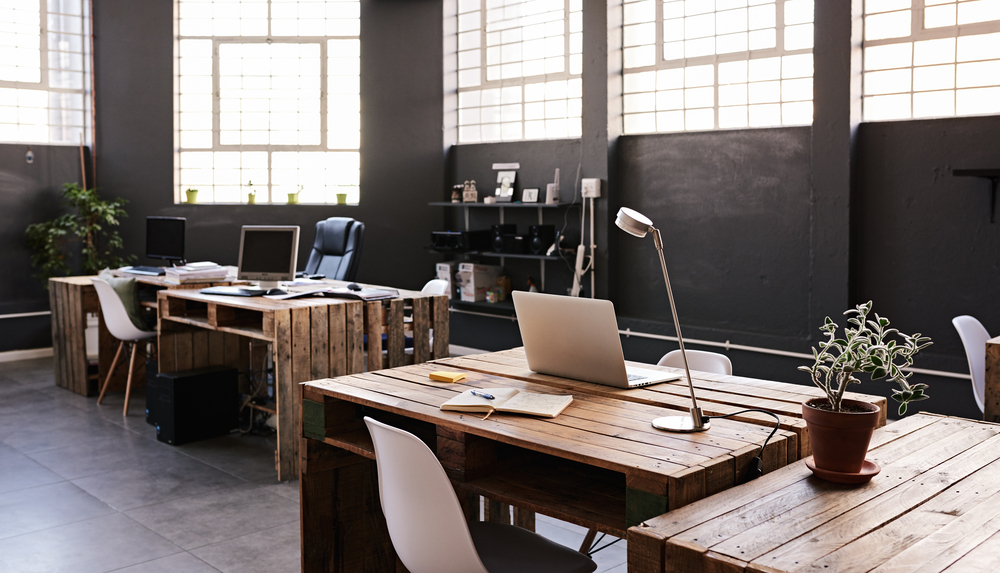When we think about boosting productivity, some radical, work-related ideas come first in our minds. We consider limiting our time on social media and try to come up with new ways to remain focused. However, turns out that the environment we work in has a much bigger impact on our wellbeing, as well as on the way we approach work. Everything from the amount of daylight to water access and the furniture setting influence workers and their satisfaction rates.
What many companies do not understand is that every brand is individual, depending on what they do and where their office is located. Taking into account the geographic location along with the cultural background is crucial when designing the space. The familiar environment can have a positive impact on workers. For example, a Japan-based Tokyo car manufacturer and a UK London escape rooms booking site would have completely different office spaces. European interior designs tend to be more monochromatic, often with expensive furniture and decorations. On the other hand, Eastern Asian, especially Japanese designs feature a lot less furniture and are more colorful. Although, as mentioned above, design decisions should be made individually, there still are some general rules that apply to every company. We have gathered some of the most useful ones below.
Leave open offices in the early 2000s
Cubicle office emerged in the 1990s, offering a bit more of the private space to employees while keeping the floor plan open. Back in those days, many thought that this was the ultimate way to boost productivity and increase employee satisfaction. The truth is that such spaces proved to be depressing, harming productivity more than any other widespread type of office arrangement.
The new millennium saw the rise of open offices. The growth was mainly driven by tech companies, that believed in communication and collaboration between employees. With just a glance at the concept, anyone would think that having rooms or barriers between workstations would importantly boost communication. Truth is the opposite. Many people working in open type offices had been complaining about how restrictive such an environment was. Those who wanted to speak up were often silenced by the others who prefer a quieter working environment. Such sentiments became so widespread that the Harvard University study was conducted on the matter. Researchers observed 150 people in 2 of the fortune 500 companies over a period of 3 weeks. The period of move between offices was chosen to better see the effects changing the work environment has on employees. The outcome was quite impressive. Open offices decreased face to face communication among the workers by 70%, while email and other means of online communication increased importantly. Thus, this certainly is not what companies should aim for. Especially those, trying to foster collaboration in their offices.
The modern alternative is introducing a variety of spaces. Instead of having one, unified floor, try to maximize the benefit features the company can offer to its employees. The actual workstation arrangement is not nearly as important as offering services such as fitness, table tennis or games alike as well as resting spaces. More and more companies introduce separate rooms for thinking, having fun and social gatherings.
Fresh air and water
Having access to fresh air and water is crucial for the well-functioning of our brains. Drinking the recommended amount of water daily helps us work better and boosts our productivity. It improves the ability to concentrate as well as cognition. Surprisingly, water is also essential for maintaining a good mood and balancing emotions. Moreover, it also reduces stress and helps to prevent headaches. Take simple measures to raise awareness about the importance of hydration among your employees. Make sure that fresh, drinking water is always provided in the workplace.
Air quality is another important factor. Breathing fresh air is directly connected to human health, and consequently to productivity. Make sure that your office space has an air filtration system. Try open windows if the air quality in your area is good. Implement a strict non-smoking policy and bring some greenery to your office.
Good light is more important than you might think
The lack of light causes eyestrain, fatigue, headaches and increases stress. The Cornell Department of Design and Environmental Analysis study found that workers that have access to a window within 10 feet, showed a decrease in eyestrain and headaches. Natural light is the most desirable source. It improves sleep quality and brings many other added benefits. However, if natural daylight is impossible to provide, an artificially well-lit room is still much better than a dark workplace. Always make sure that no furniture is blocking the sunlight. If you are moving to a new office or getting the first one, purchase more minimalistic, less bulky furniture. Do not use curtains unless necessary and arrange workers in accordance with the daylight they will get. The kitchen, bathrooms or other such spaces certainly do not need as much natural light. See it as a resource and make sure that it is efficiently allocated.
Make design changes if needed
Everything in the office, from the color of walls to the window size impact workers’ productivity. High ceilings are said to be important for creative thinking. They offer more space to develop an idea or come up with a new one. Thus, if you are moving to new office space, make sure that the ceiling height is more than 10 feet. Making such a major change is impossible for many companies. If you are not moving anywhere and your office’s ceiling can not be renewed, look at the color of your walls. A number of researches have found that colors are directly linked to how we think and can be used to improve workplace quality.
